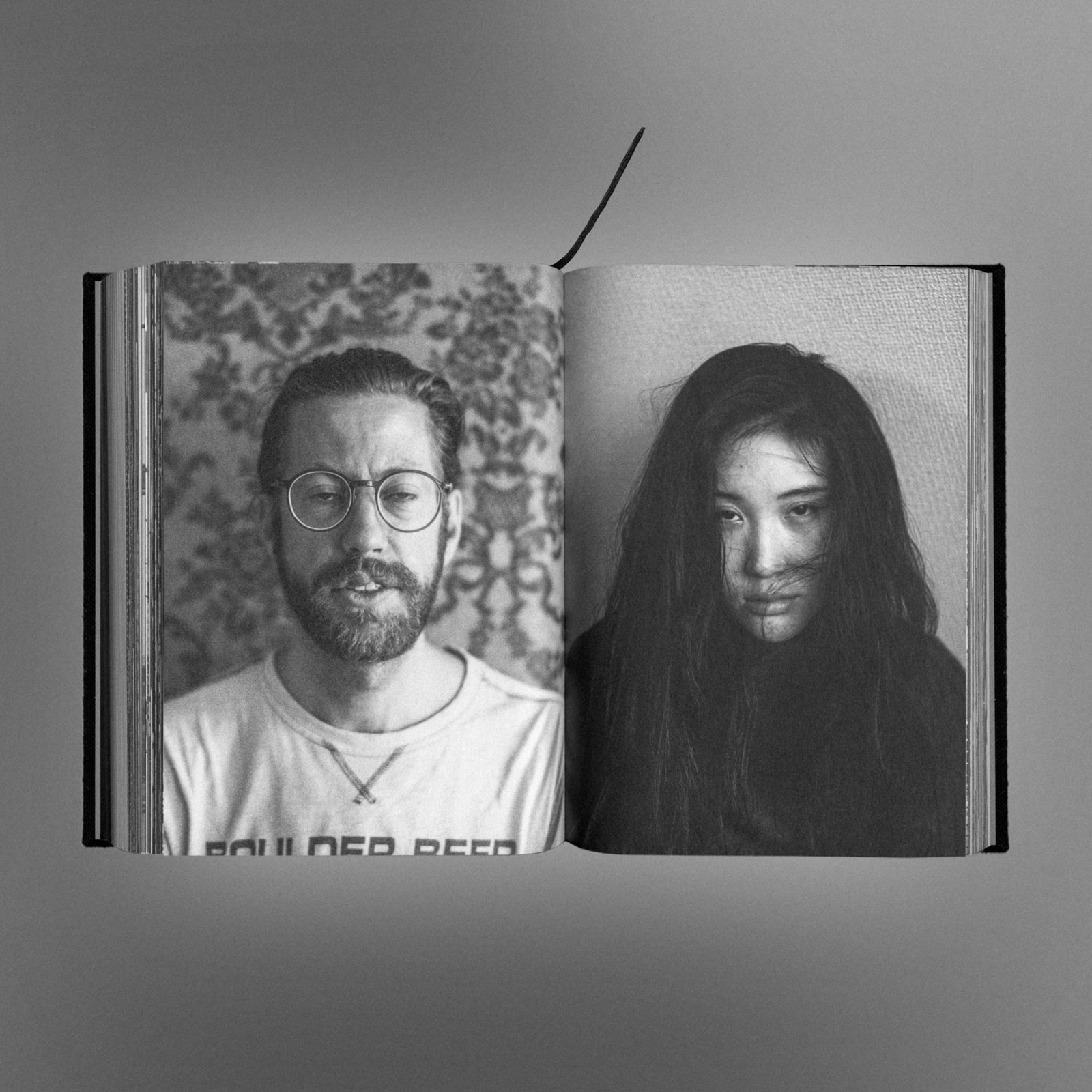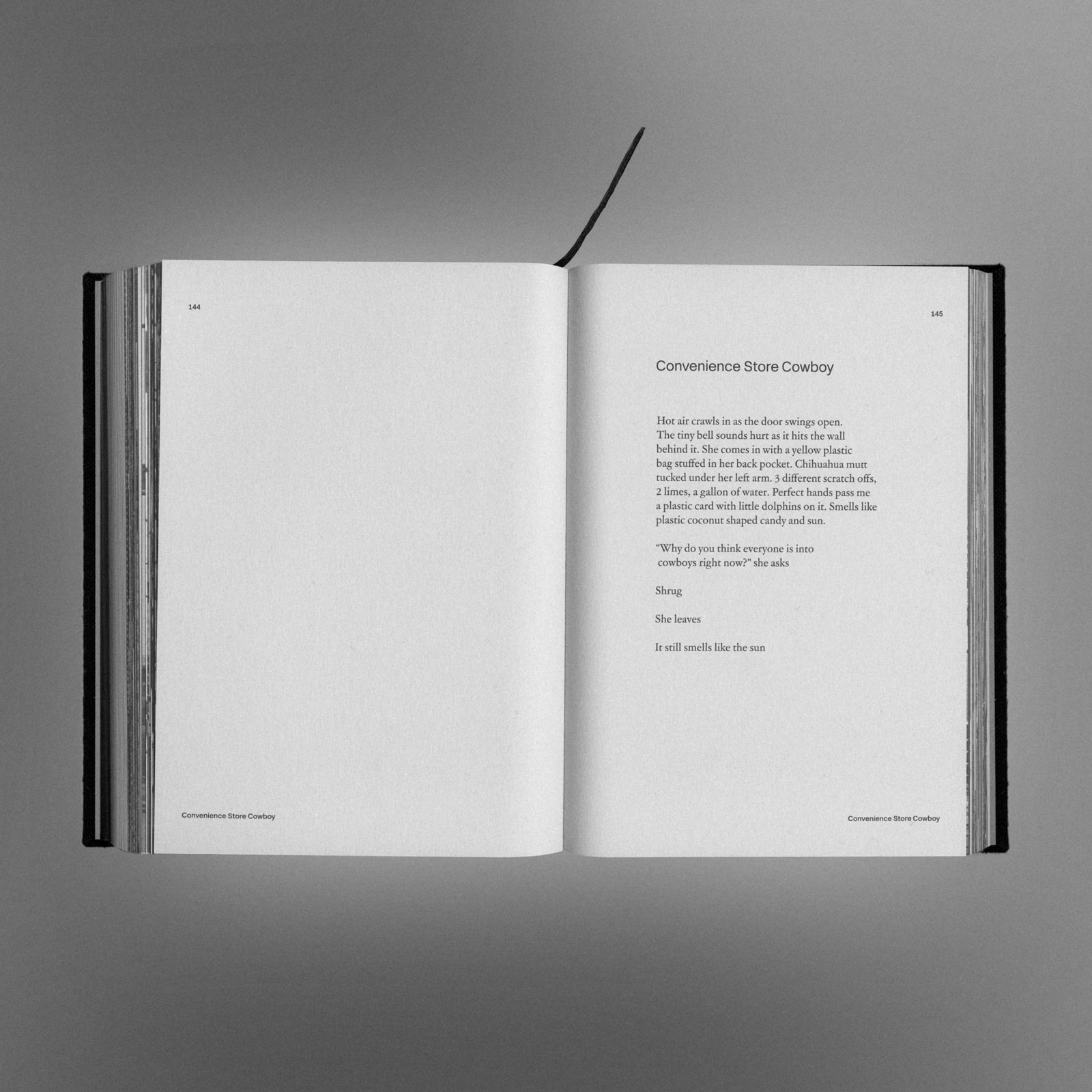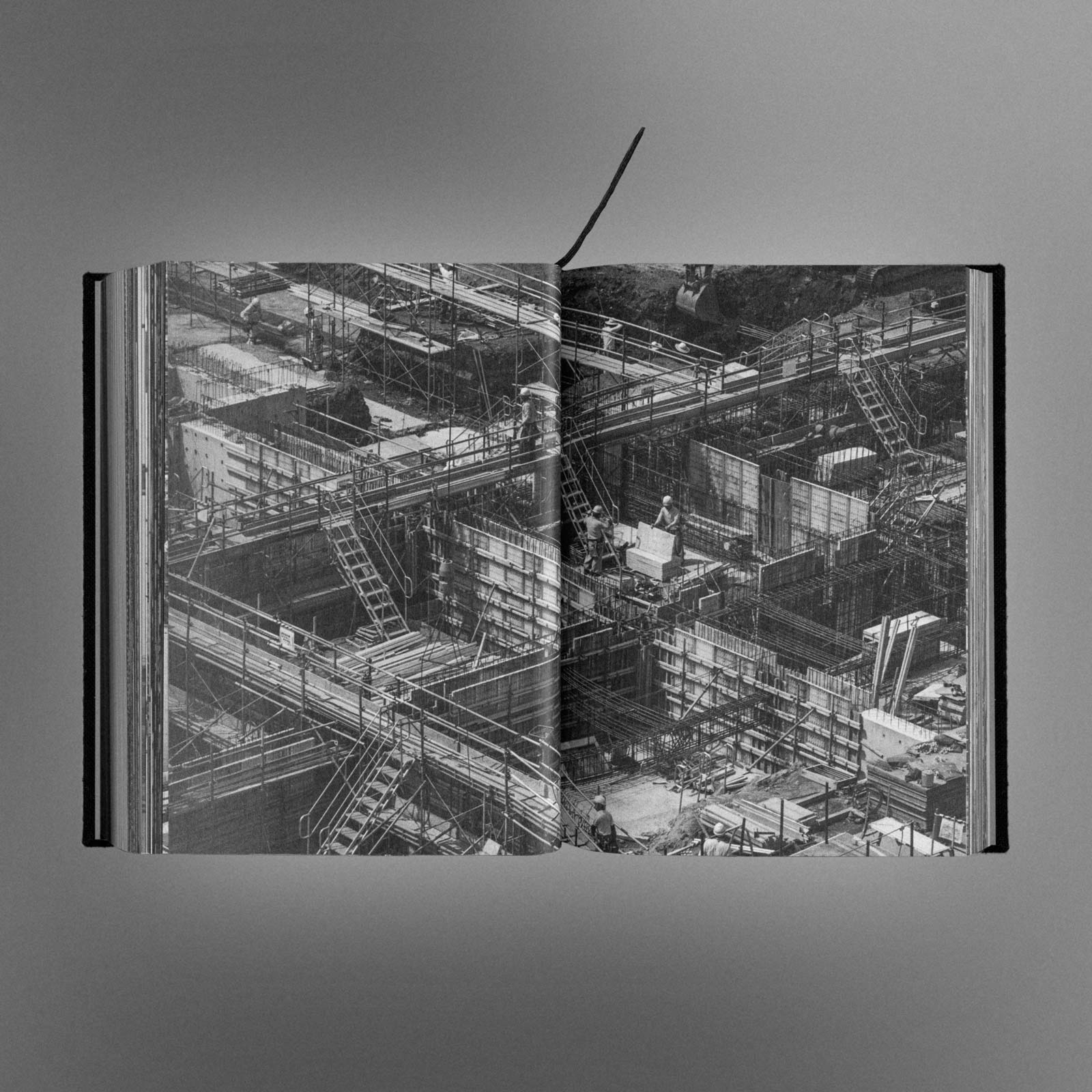Upon the book’s release, photographer Francis Kanai and poet Malaya Malandro join Document to discuss finding familiarity in the unfamiliar
Mundanity isn’t a constant or an intrinsic characteristic. What might be considered mundane by one person can be easily animated by the mere perspective of another. Such is the case with the photographs of Francis Kanai and the poetry of Malaya Malandro in their first project as FKMM. From their respective home bases of Takasaki and Los Angeles, they collaborated by way of phone and email for Everything is a Self-Portrait, a 300-page exploration of the “unending self”—finding familiar in the unfamiliar, seeking reflections of themselves in the world around them.
The first edition of the cloth-bound collection of poems and pictures released in a run of just 200 copies. Fifty of those were dropped by Metalabel, a platform for artist collectives to sell work and record it on-chain—an attempt, Kanai says, to construct a sense of community around a project in a way that doesn’t reduce its creators to caricatures, and its consumers to financial resources to be extracted from. In its own words, Metalabel is “creativity in multiplayer mode,” providing a lightweight structure through which people like Kanai and Malandro can pool their skills, audiences, and resources with like-minded creators.
Everything is a Self-Portrait is distinctly embedded with that spirit of collaboration—formed with the shared ideas of the artists, and thematically rooted in the limitless entanglements between people and their environments. Upon the book’s release, Kanai and Malandro join Document to outline their making process, and to reflect on their reflections.
Megan Hullander: What was the process of collaborating long-distance like, and what do you think it brought to the project that might not have come about, had you been working together in-person?
Francis Kanai: It probably added to the amount of overall time the project took to make, due to a combination of epic phone conversations, mixed with epic email and text exchanges. Maybe, what was somewhat unique about the distance between [us] was more the contrast of our environments.
Malaya Malandro: I think it added another layer to the outcome, which lent itself to this kind of non-linear reading of the book—because our time wasn’t super linear. For Francis, it was [my] morning tomorrow, and for me, it was his yesterday. Even our seasons were slightly different. Then, there’s the layer of time—does time move faster in a desert city than it does in a mountain town? Maybe.
Megan: How were the poetry and photographs intended to work in tandem?
Francis: There was a discussion of how to most effectively deliver an idea while we worked on different layout approaches. But rather than giving diagrams on how and why people should feel and think about it, I think it’s more interesting to hear what was found without a guide. By saying what we found in it, or designed it to be, we potentially destroy those other unique paths of meaning.
Malaya: I guess the process of our conversations caused things to fall into book format, but this wasn’t the first thing we tried to make together. I guess—as corny as it sounds—we saw each other in each other’s work, and that was the first thread. Weaving was the rest of it, photos and poetry. Maybe the feeling of being less lonely—the way you feel when someone else feels themself in your work—is the end, the conclusion, which perhaps was the intention all along.
Megan: Was there any one thing from the book that you feel most reflected you?
Malaya: I think the book itself—the way it turned into a tome to be experienced as a whole Are the parts themselves more than the whole, or is the whole its own thing? That’s for others to decide. Everyone likes quoting ‘I contain multitudes’—but maybe it applies here. Saying this makes me sound like I have a big head.
“Maybe the feeling of being less lonely—the way you feel when someone else feels themself in your work—is the end, the conclusion, which perhaps was the intention all along.”
Megan: Was the process of finding these reflections of yourself natural, or did it require extra work?
Francis: I would say it was obvious, but not without some why. For starters, we are very different from one another on paper. However, we have so much in common when it comes to our opinions on the world around us: our sense of humor, our frustrations and joys—especially surrounding family. That starting point probably set the stage for the idea of the unending self.
Malaya: I think to find the reflections, you don’t seek them out. They seek you out. And then, talking with Francis and looking at each other’s work holistically, it was like, So the same ghosts, demons, and angels have visited you, too?
Megan: What does the ‘unending self’ mean to each of you?
Francis: Maybe it’s something about how thin the veil is that separates me from you, a tree from a rock? Maybe it’s something about you and I being a continuation of something more than the beginning of something?
Malaya: I remember, in high school, smoking a cigarette in mud, thinking, When I take earth into my home, it becomes dirt. But here, it is still earth. We draw the lines that end the self. There is a poet, Eduardo Chillida, who wrote, ‘En una linea el mundo se une / Con una linea el mundo se divide.’ That translates into something like, ‘Through a line the world is united / Through a line the world is divided.’
Megan: How would you describe the tone of the project as a whole?
Francis: Stoic—with a betrayal of joy for the mundane and ridiculous.
Malaya: Other people noticed a dark undertone to the project—in the subject matter of the writing, and then some of the photography. It being monotone lends to this, too. However, darkness is not negative, but maybe [adds a sense of] mystery.
There is a carefulness I think we tried to treat things that might otherwise feel careless—all compiled into a Bible-like form. Someone might ask why, but I hope through interacting with it, the answer presents itself in a way [that’s] unique to the asker.



























